Discover 35 hidden attractions, cool sights, and unusual things to do in Augsburg (Germany). Don't miss out on these must-see attractions: Augsburg Zoo, Fuggerei, and Augsburg Cathedral. Also, be sure to include City Hall in your itinerary.
Below, you can find the list of the most amazing places you should visit in Augsburg (Bavaria).
Table of Contents
Augsburg Zoo
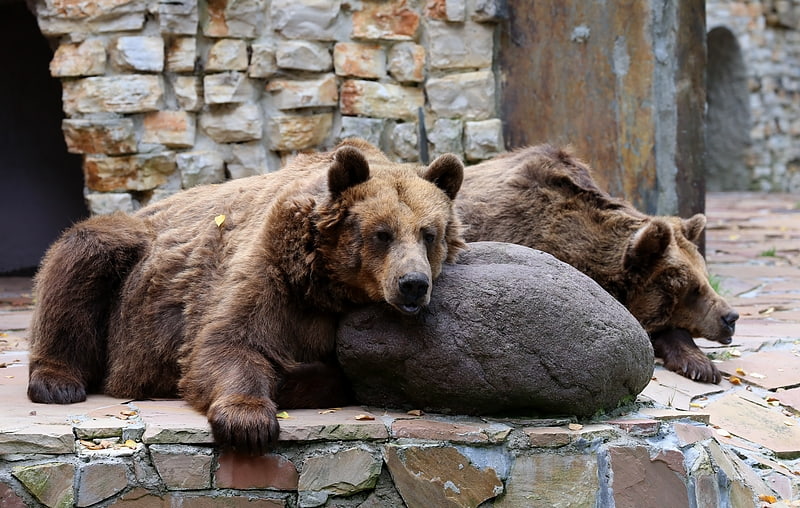
Also known as: Zoo Augsburg
Zoo in Augsburg, Germany. Augsburg Zoo is a zoo located in the city of Augsburg in Bavaria, Germany, and with over 600,000 visitors annually, the zoo belongs to the 20 largest Zoos in Germany.
Augsburg Zoo holds 1,600 animals belonging to 300 different species. Of those animals, the zoo keeps 100 reptiles and amphibians from 25 species. The zoo is involved in the 18 European Endangered Species Programmes.[1]
Address: Brehmpl. 1, 86161 Augsburg (Spickel - Herrenbach)
Fuggerei
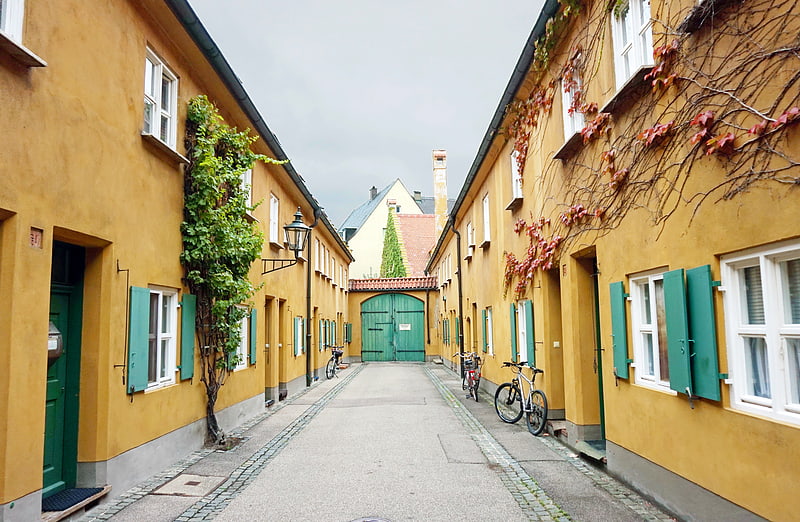
Tourist attraction in Augsburg, Germany. The Fuggerei is the world's oldest public housing complex still in use. It is a walled enclave within the city of Augsburg, Bavaria. It takes its name from the Fugger family and was founded in 1516 by Jakob Fugger the Younger as a place where the needy citizens of Augsburg could be housed. By 1523, 52 houses had been built, and in the coming years the area expanded with various streets, small squares and a church. The gates were locked at night, so the Fuggerei was, in its own right, very similar to a small independent medieval town. It is still inhabited today, affording it the status of being the oldest public housing project in the world.[2]
Address: Jakoberstr. 26, 86152 Augsburg (Innenstadt)
Augsburg Cathedral
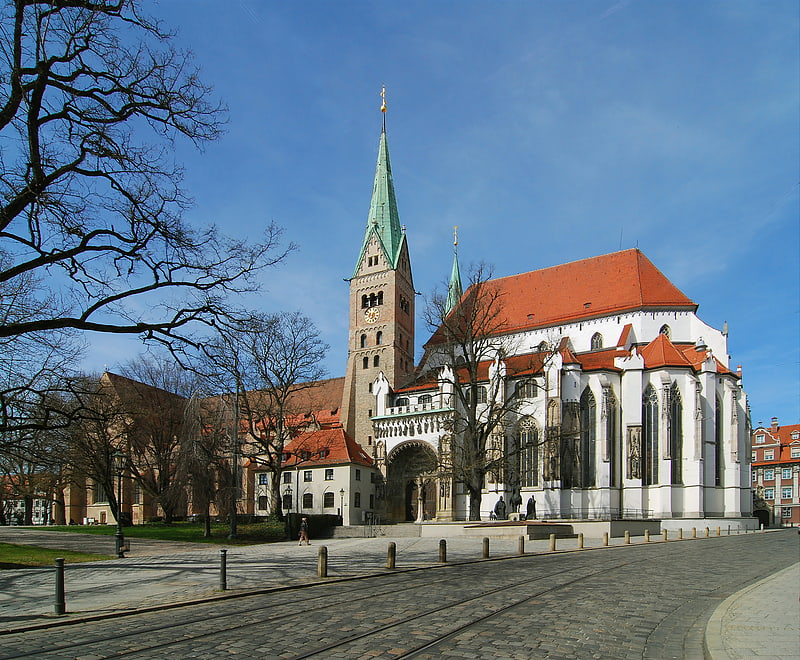
Also known as: Augsburger Dom
Cathedral with renowned stained glass. The Cathedral of Augsburg is a Roman Catholic church in Augsburg, Bavaria, Germany, founded in the 11th century in Romanesque style, but with 14th-century Gothic additions. Together with the Basilica of St. Ulrich and Afra, it is one of the city's main attractions. It measures 113 x 40 m, and its towers are 62 m high. It is dedicated to the Visitation of Virgin Mary.[3]
Address: Hoher Weg, Augsburg (Innenstadt)
City Hall
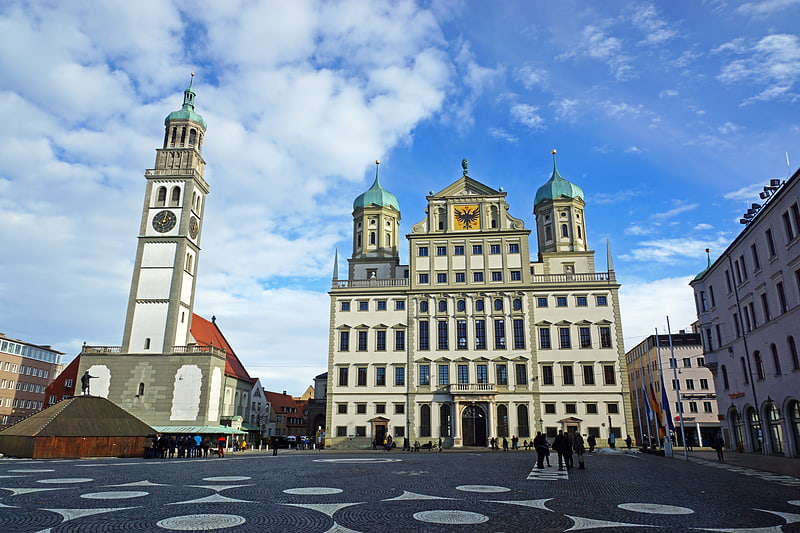
Also known as: Rathaus
City or town hall in Augsburg, Germany. The Town Hall of Augsburg is the administrative centre of Augsburg, Bavaria, Germany, and one of the most significant secular buildings of the Renaissance style north of the Alps. It was designed and built by Elias Holl, Stadtbaumeister, in 1615–1624. Due to its historic and cultural importance, it is protected by the Hague Convention for the Protection of Cultural Property in the Event of Armed Conflict.[4]
Address: Rathausplatz 2, 86150 Augsburg (Innenstadt)
Basilica of SS. Ulrich and Afra
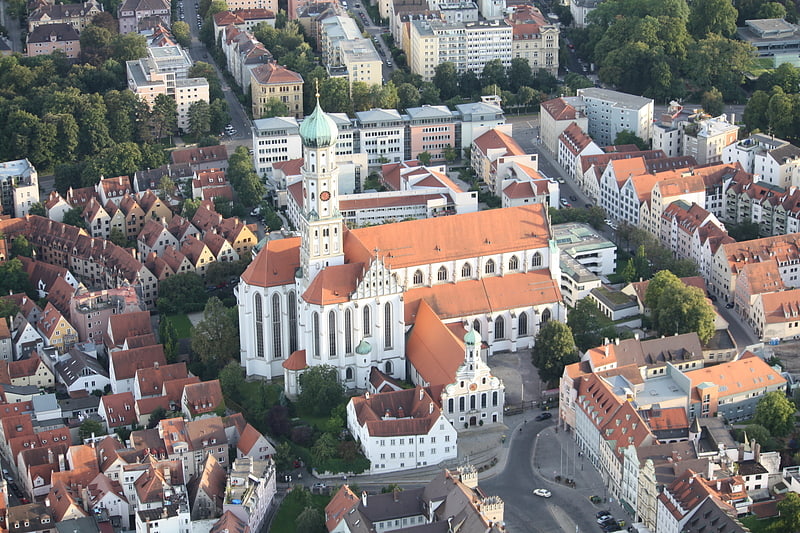
Also known as: St. Ulrich und Afra
Catholic church in Augsburg, Germany. The Basilica of SS. Ulrich and Afra Is a Catholic parish in Augsburg, in Bavaria, which originated from the Roman tomb of St. Afra, which was martyred in 304. The building is a great example of Gothic architecture in Germany; In its interior it conserves three enormous and very precious altars of Renaissance ends considered a masterpiece of the German sculpture of the period. Its high bell tower with an "onion" dome, which dominates the city to the south, served as a prototype for the construction of numerous baroque towers of Bavaria.
In 1577 (officially) and 1643–44 (virtually) the church, which was called the Benedictine abbey of Saints Ulrich and Afra, was elevated to the rank of imperial abbey. On October 18, 1777, a Wolfgang Amadeus Mozart organ concert was held. On May 4, 1782, Pope Pius VI celebrated Mass in Basilica. Secularized in 1802, it entered the possession of the State of Bavaria. In 1810 the church was elevated to a parish church; from July 4, 1937, declared by Pope Pius XI, a minor basilica; and finally on May 4, 1987 was visited by Pope John Paul II.[5]
Address: Ulrichspl. 19, 86150 Augsburg (Innenstadt)
WWK ARENA
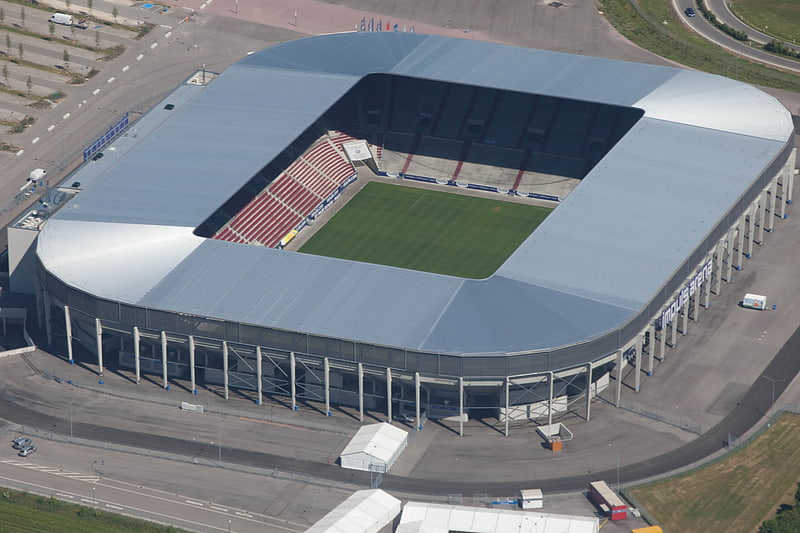
Also known as: WWK-Arena
Stadium in Augsburg, Germany. Augsburg Arena, currently known commercially as the WWK Arena is a football stadium in Augsburg, Bavaria, Germany. It is used mostly for football matches and hosts the home matches of FC Augsburg.
The stadium has a capacity of 30,660 with 19,060 seats and standing room for 11,034. A second phase of construction could expand capacity to 49,000 in the future. It replaced the club's previous home stadium, Rosenaustadion. FC Augsburg played their first match in the new stadium in 2009
During the time of designing and constructing the stadium, it was called "Augsburg Arena". It was opened as "Impuls Arena" (officially stylised as impuls arena), and was renamed "SGL Arena" (officially stylised as SGL arena) after SGL Carbon acquired the naming rights for the structure in May 2011. The contract had a term of seven years and began on 1 July 2011. On 1 July 2015 the stadium naming rights were acquired by WWK, an insurance company, changing the official name of the stadium to "WWK ARENA".
Augsburg was one of the official host cities of the 2010 FIFA U-20 Women's World Cup and the subsequent 2011 FIFA Women's World Cup. The Impuls arena was the location of several matches during the group stage and the quarterfinals. During the FIFA-competitions it was renamed "FIFA Women's World Cup Stadium Augsburg". The stadium has hosted one Germany national team game and was nicknamed the "Anfield of the B17 highway" following FCA's 2016 Europa League Last 32 First Leg clash with Liverpool.
WWK Arena is the first climate-neutral football stadium in the world. The carbon neutrality was achieved by six ecological heat pumps (40 m deep), which produce the desired temperature via heat exchangers. A bio natural gas boiler also supplies the necessary energy during peak load times at a game. In 2017, a new stadium facade will be made for the WWK Arena.[6]
Address: Bürgermeister-Ulrich-Str. 90, 86199 Augsburg
Perlachturm

Tower in Augsburg, Germany. The 70-metre-tall Perlachturm is a belltower in front of the church of St. Peter am Perlach in the central district of Augsburg, Germany. It originated as a watchtower in the 10th century. The existing Renaissance structure was built in the 1610s by Elias Holl, who also designed the neighbouring Town Hall.[7]
Address: Rathausplatz, Augsburg (Innenstadt)
Augsburger Puppenkiste
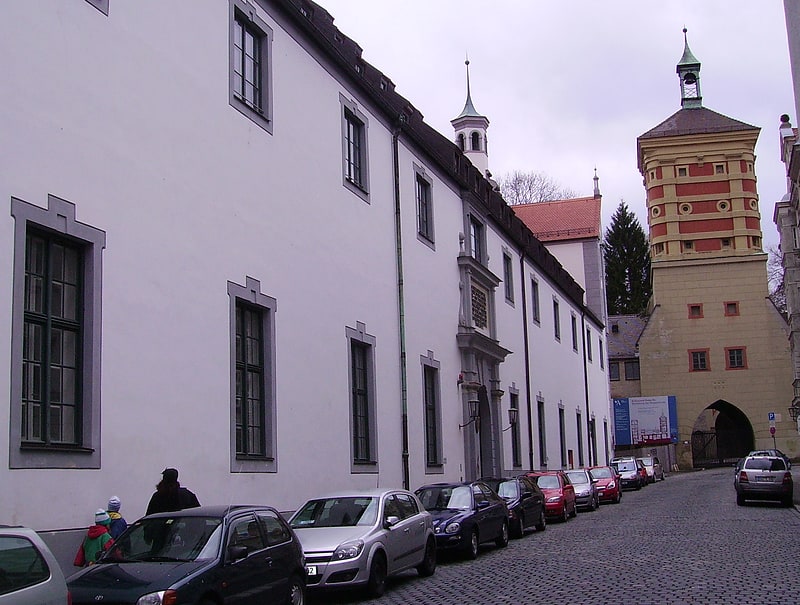
The Augsburger Puppenkiste is a marionette theater in Augsburg, Germany.
It is located at the former Heilig-Geist-Spital in the historic center of Augsburg. Since 1948, the "Augsburger Puppenkiste" had been producing theatrical adaptations of fairy tales and serious pieces. In 1953, it began producing television series and gained nationwide prominence with productions, such as Jim Knopf und Lukas der Lokomotivführer and Urmel aus dem Eis.[8]
Address: Spitalgasse 15, 86150 Augsburg (Innenstadt)
Botanischer Garten Augsburg
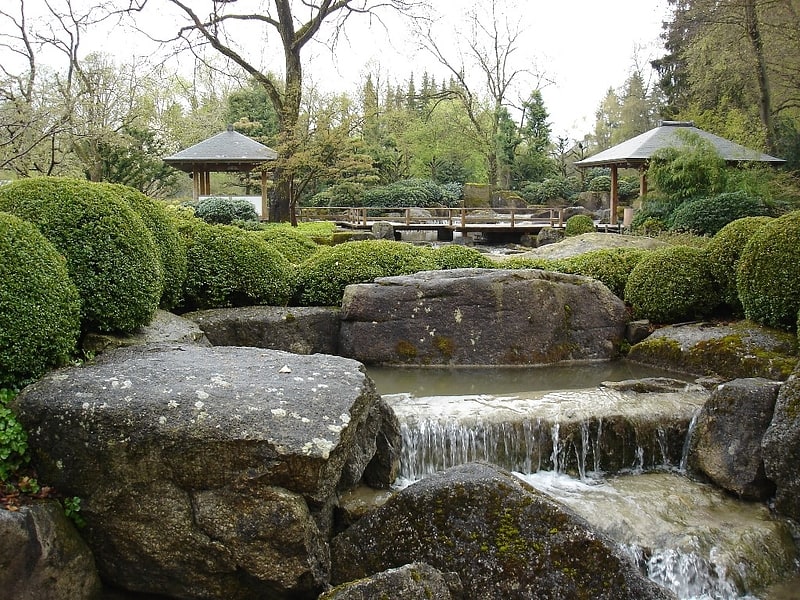
Botanical garden in Augsburg, Germany. The Botanischer Garten Augsburg is a municipal botanical garden located at Dr.-Ziegenspeck-Weg 10, Augsburg, Bavaria, Germany. It is open daily; an admission fee is charged.
Today the garden contains a large Japanese garden, a medicinal plant garden, rose garden, and a crop garden. All told, it includes over 3100 species and varieties of perennials, wild herbs, grasses, and ferns, with 280 species and varieties of roses, about 1200 species and varieties of plants under glass, and more than one million onion plants. Other points of interest include cacti, euphorbia, and succulents, as well as a sage garden and climbing plants.[9]
Address: Dr.-Ziegenspeck-Weg 10, 86161 Augsburg (Spickel - Herrenbach)
Rosenaustadion
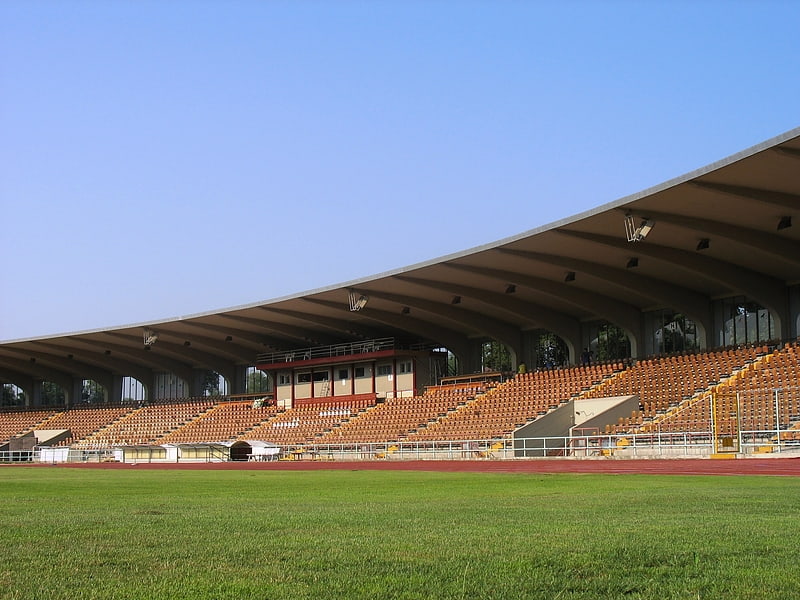
Multi-purpose stadium in Augsburg, Germany. Rosenaustadion is a multi-purpose stadium in Augsburg, Bavaria, Germany. Built in 1951, it's a heritage listed monument and was the largest stadium in Augsburg for 58 years until 2009 when the Augsburg Arena was opened. With a spectator capacity of 32,354, it is primarily used for football matches and track & field athletics events. It is the current home ground for FC Augsburg Women and FC Augsburg II. It is the former home of the FC Augsburg men's first team, who played at the ground between 1951 and 2009.[10]
Bahnpark Augsburg
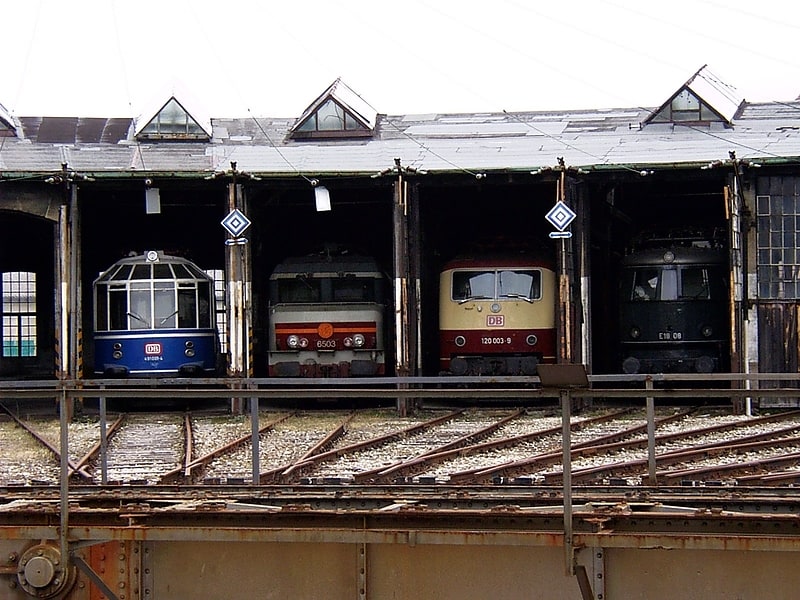
Museum in Augsburg, Germany. The Augsburg Railway Park is a railway museum in Augsburg on part of the former Augsburg locomotive shed owned by the Deutsche Bahn. Following reconstruction work, the park officially reopened on 13 April 2009. In the future, 29 historic locomotives from the EU member countries and also Switzerland will be exhibited in the roundhouse and on the turntable, the so-called Europa Roundhouse, which are protected historical buildings. In addition to the roundhouse there are also three historical steam locomotive halls with a workshop atmosphere and a historical smithy.[11]
Address: Firnhaberstr. 22, 86159 Augsburg
Augsburg textile and industry museum
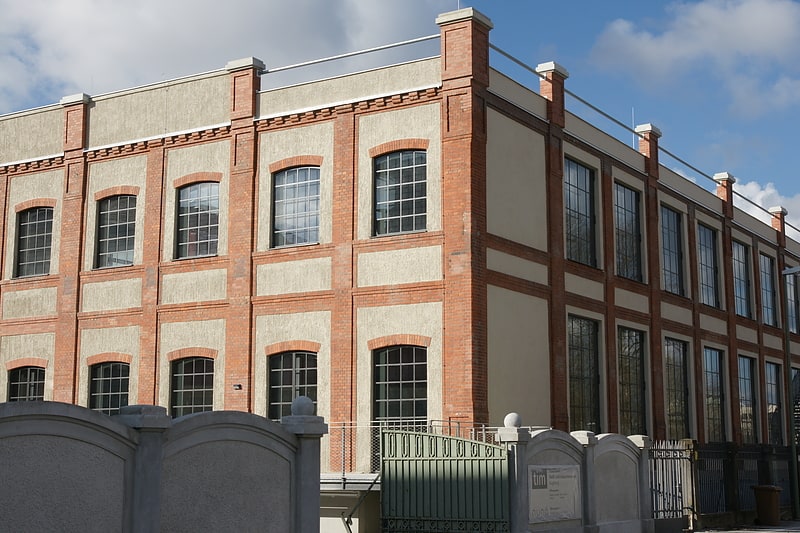
Also known as: Staatliches Textil- und Industriemuseum
Museum in Augsburg, Germany. The Augsburg textile and industry museum, known by its acronym tim, is a museum in Augsburg a city in the south-west of Bavaria, Germany. It is situated in the Augsburger Kammgarnspinnerei, a former worsted spinning mill. The museum is an Anchor point on the European Route of Industrial Heritage.[12]
Address: Provinostraße 46, 86153 Augsburg (Innenstadt)
Schaezlerpalais
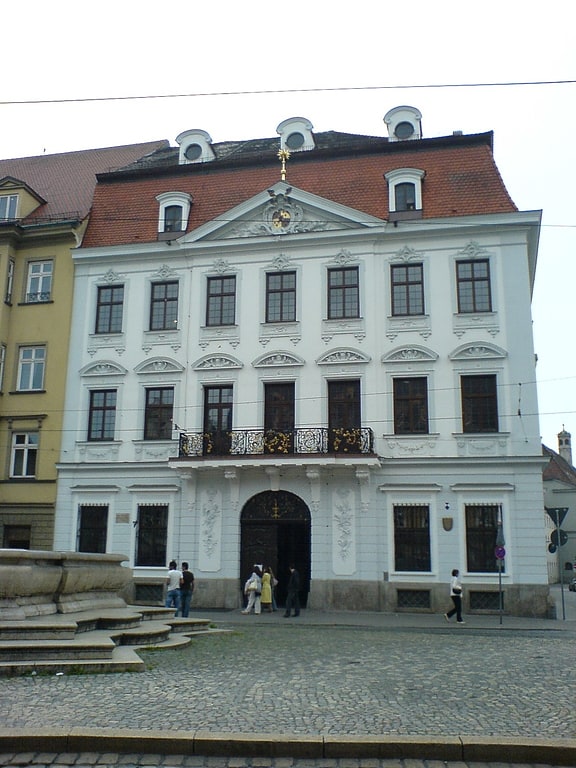
Baroque palace with art exhibits. The Schaezlerpalais is a baroque palace in Augsburg. The palace extends far back from the street, encompassing dozens of rooms, courtyards and gardens. The gilded mirrored ballroom was built between 1765-1770 and has survives intact. it is widely regarded as the most artistically significant Rococo ballroom in Germany. Carl Albert von Lespilliez was the architect of the Schaezlerpalais.
The Free State of Bavaria has declared the Schaezlerpalais a registered historic monument.
The Schaezlerpalais houses the following art collections:
- Deutsche Barockgalerie, Southern German paintings of the 17th and 18th century (1st floor)
- Karl und Magdalene Haberstock-Stiftung Baroque paintings, e.g. Paolo Veronese, Canaletto, Anthony van Dyck and Giovanni Battista Tiepolo (2nd floor)
- Staatsgalerie Altdeutsche Meister with paintings from Southern Germany of the 15th and 16th century (in a former monastery), a subsidiary of Bavarian State Picture Collection (Bayerische Staatsgemäldesammlungen)
Adjacent to the building complex, a Baroque garden is open to the public.[13]
Address: Maximilianstraße 46, 86150 Augsburg (Innenstadt)
St. Peter am Perlach
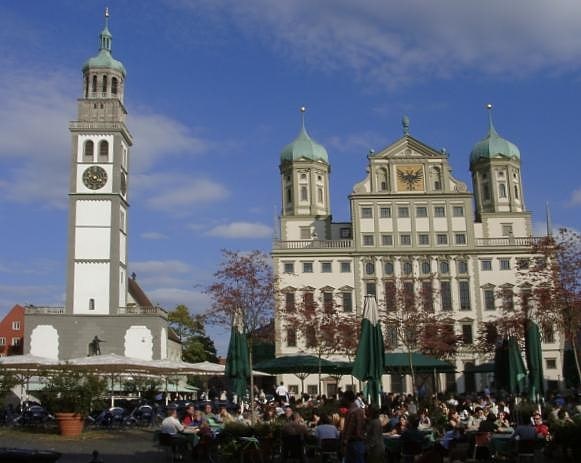
Catholic church in Augsburg, Germany. St. Peter am Perlach or Perlach-Church is a romanesque Catholic church in the center of Augsburg. The tower of the church, the Perlachturm, is together with the Augsburg Town Hall the landmark of Augsburg.[14]
Address: 6 Rathaus platz, Augsburg (Innenstadt)
Autobahnsee Augsburg
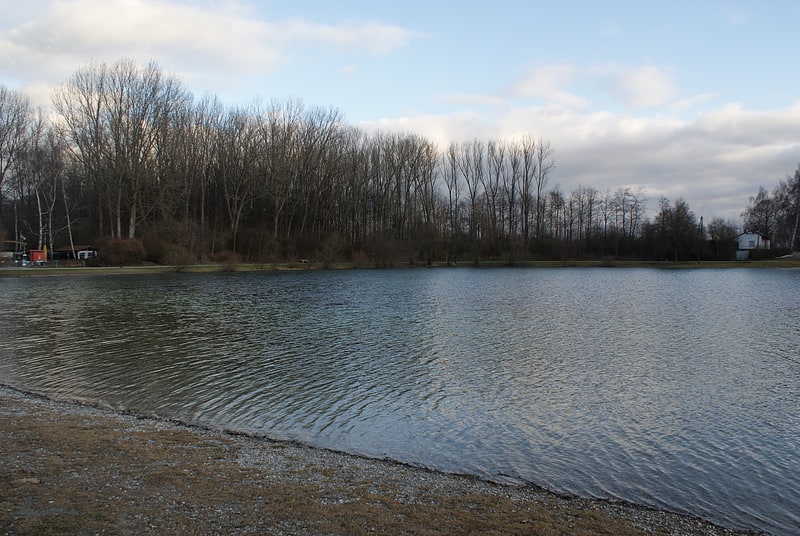
Also known as: Autobahnsee
Lake in Germany. Autobahnsee Augsburg is a lake in Augsburg, Swabia, Bavaria, Germany. It is located along the Bundesautobahn 8, south of Augsburg Airport. At an elevation of 50m, its surface area is 17 ha. The lake is mainly used as a bathing lake, but portions are used for fish farming. The local Health Office is responsible for monitoring water quality.[15]
Augsburg Protestant Cemetery
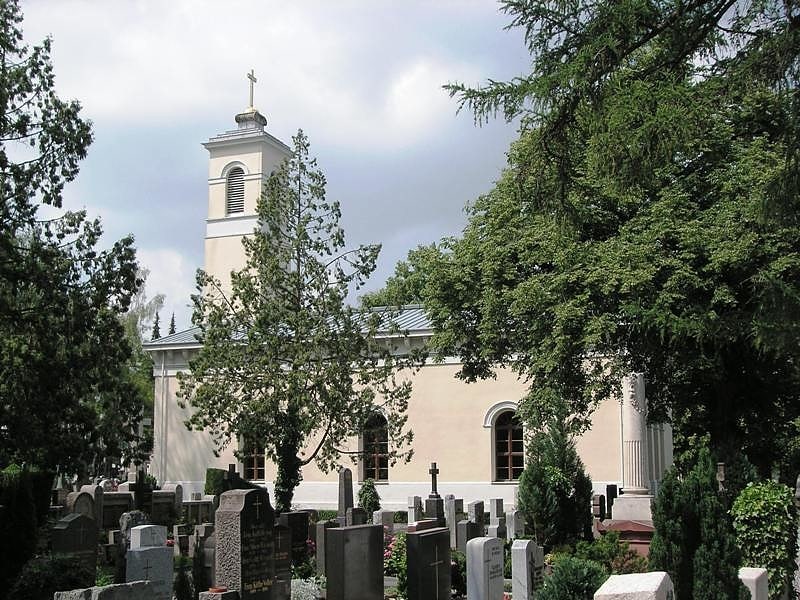
Also known as: Protestantischer Friedhof Augsburg
Cemetery in Augsburg, Germany. The Protestant cemetery in Augsburg on Haunstetter road in Hochfeld district of Augsburg was established in 1534 by the City of Augsburg. The cemetery is still in operation and used for burials. It is currently the oldest cemetery in Augsburg.[16]
Address: 36 Haunstetter Straße, Augsburg
Maximilianmuseum
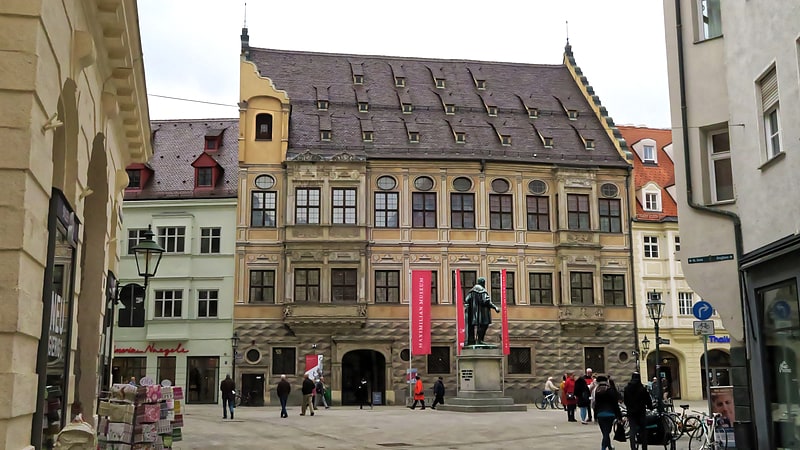
Museum in Augsburg, Germany. The Maximilian Museum is a large, public museum housed in a palatial building erected in 1546 in Augsburg, Germany. It houses a notable collection of decorative arts. Augsburg was the leading German center of sculpture, painting, and, especially, of fine work in gold in silver from the late Middle Ages until the modern period.
The museum was opened in 1855.[17]
Address: Fuggerpl. 1, 86150 Augsburg (Innenstadt)
Stadtmarkt
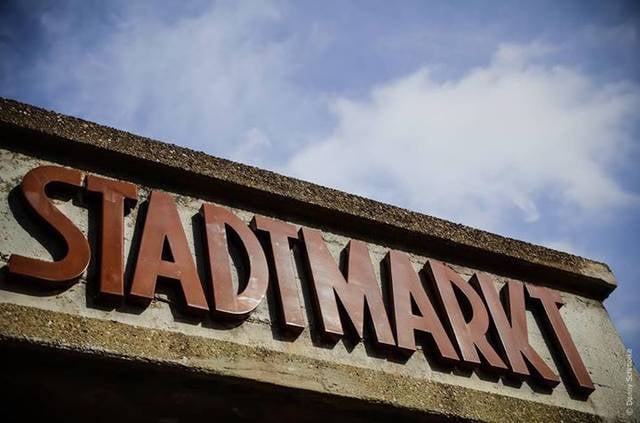
Shopping, Shopping centre, Gift shop, Farmer's market, Food court
Address: Fuggerstraße 12A, 86150 Augsburg (Innenstadt)
Stempflesee

Lake in Germany. Stempflesee is an artificial lake in Augsburg-Haunstetten, Swabia, Bavaria, Germany. Its surface area is 0. 014 km².[18]
Kuhsee
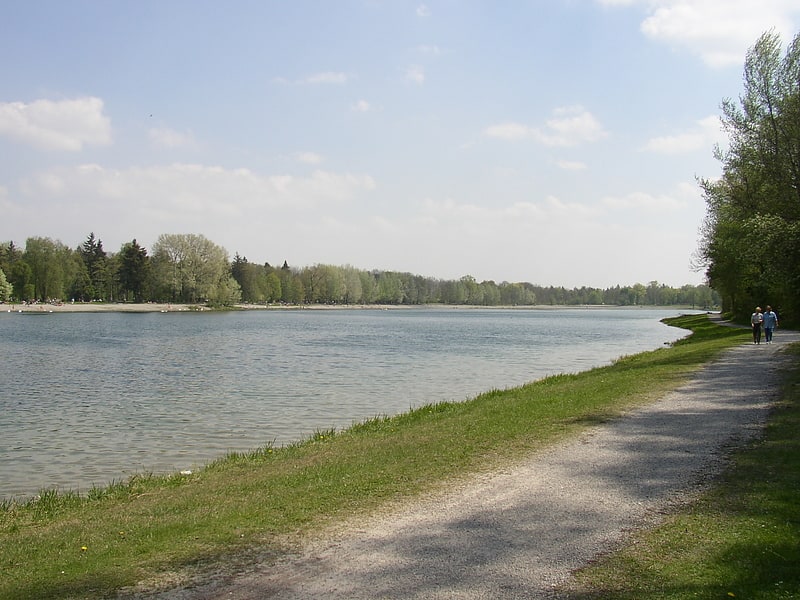
Lake in Germany. Kuhsee is a lake in Augsburg-Hochzoll-Süd, Swabia, Bavaria, Germany. Its surface area is ca. 17 ha.[19]
St Catharine's Convent
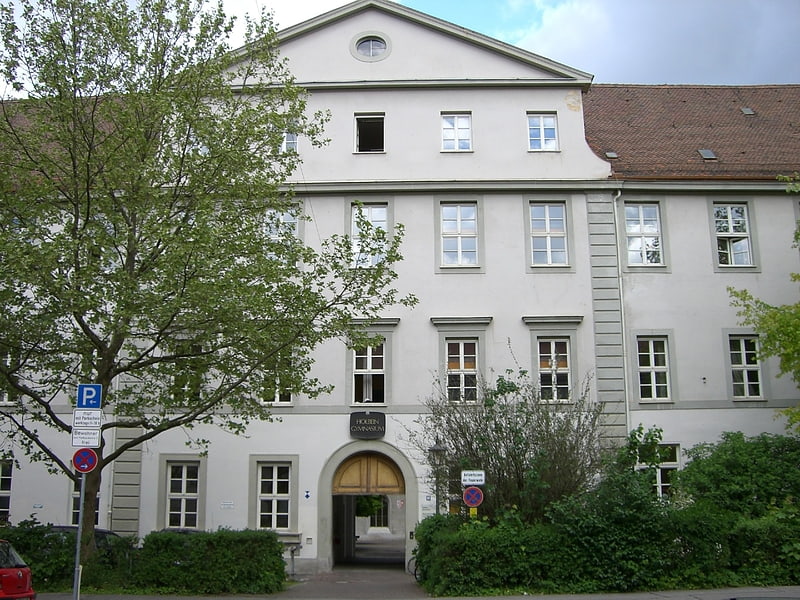
Monastery. St Catharine's Convent in Augsburg, Germany was a community of Dominican nuns.
It was founded in the Am Gries suburb of the city in 1243 before moving into the city centre eight years later. It was dissolved in 1802 and the nuns vacated the monastery in 1807. In 1834 some of the convent buildings were re-used to house the Königliche Polytechnische Schule and a trade school. In 1835 the former convent church was converted into the Staatsgalerie Altdeutscher Meister, a branch of the Bavarian State Painting Collections, which is still there today. In 1877 the building was taken over by a district primary school, now known as the Holbein-Gymnasium.[20]
St. Anne's Church
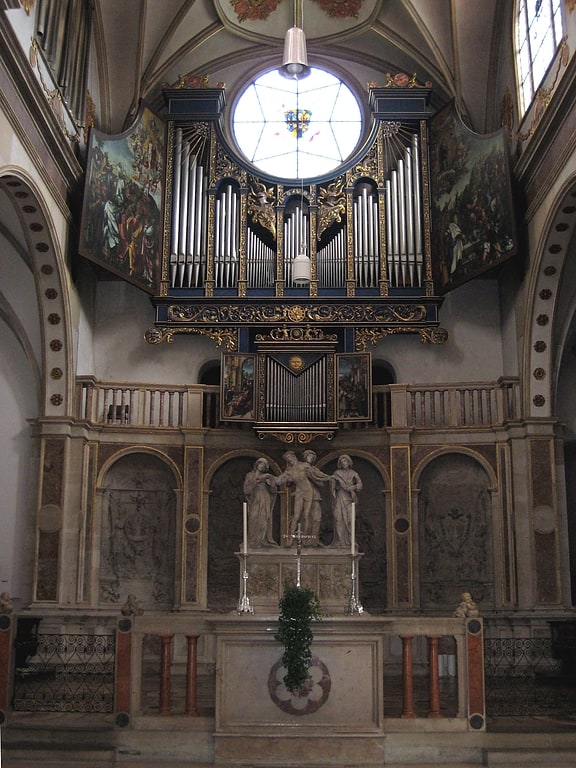
Also known as: St. Anna
Church building in Augsburg, Germany. St. Anne's Church in Augsburg, Germany, is a medieval church building that was originally part of a monastery built in 1321. It is notable for its elaborate interior decoration.[21]
Address: Im Annahof 2, 86150 Augsburg (Innenstadt)
Oberschönenfeld Abbey
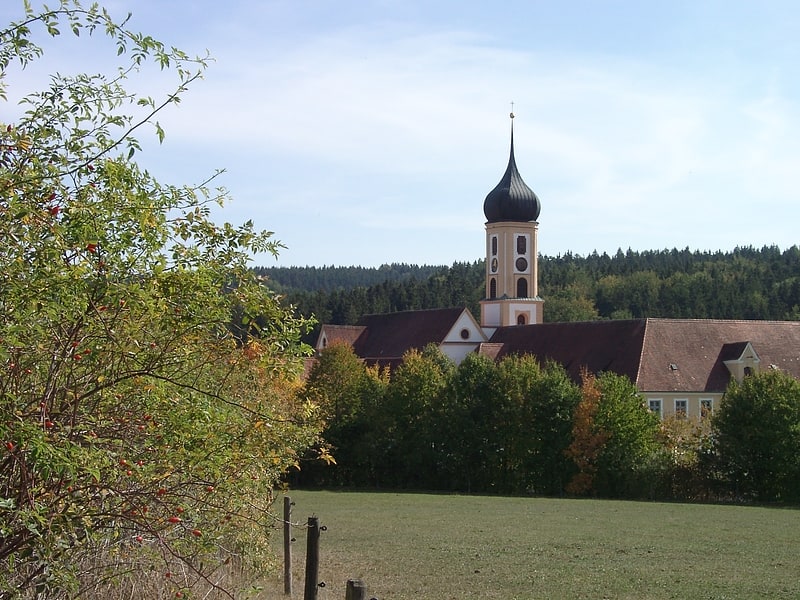
Also known as: Kloster Oberschönenfeld
Oberschönenfeld Abbey is a Cistercian nunnery in Gessertshausen in Bavaria, Germany.[22]
Address: Oberschönenfeld 1, Augsburg
Hercules' Fountain
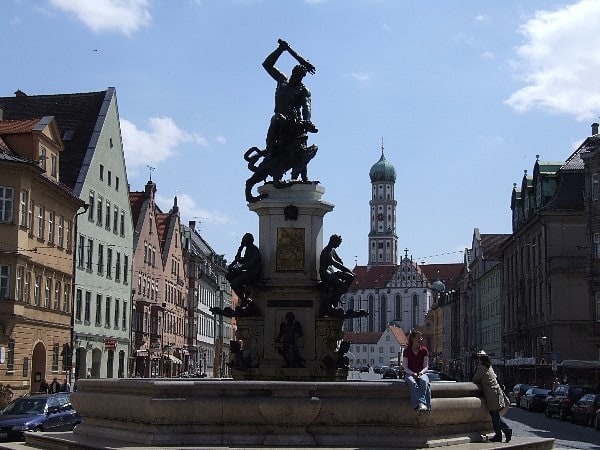
The Hercules Fountain is one of the three magnificent fountains in Augsburg, along with the Augustus Fountain and Mercury Fountain. The fountain is located in Maximilianstraße, directly in front of the main entrance of the Schaezlerpalais. As part of the "Augsburg Water Management System," the Hercules Fountain has been a UNESCO World Heritage Site since July 6, 2019.
Holy Cross Church

Also known as: Katholische Heilig-Kreuz-Kirche
Monastery in Augsburg, Germany. The Catholic Holy Cross Church is a Roman Catholic parish church in the southern German city of Augsburg, Bavaria. While its history dates back to 1143 when a hospice with a chapel was constructed on the site, the present church in the Gothic style was built by Provost Vitus Fackler in 1508. After bombing damage in the Second World War, rebuilding work was completed in 1949.
Right next to this church is the Evangelical Holy Cross Church, Augsburg.[23]
Address: Ottmarsgäßchen 6, 86152 Augsburg (Innenstadt)
Auensee
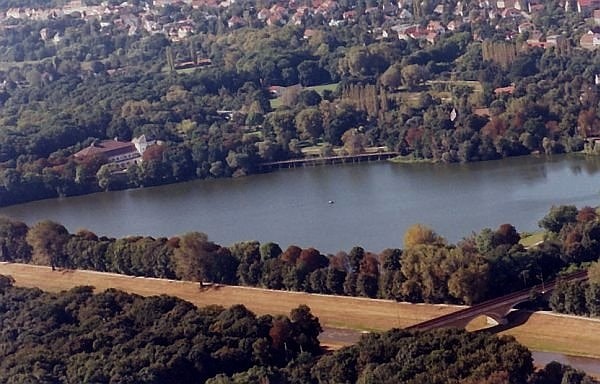
Lake in Germany. Auensee is a lake in Swabia, Bavaria, Germany. It lies at an elevation of 498 m and its surface area is 18 ha.[24]
St. Stephen's Abbey
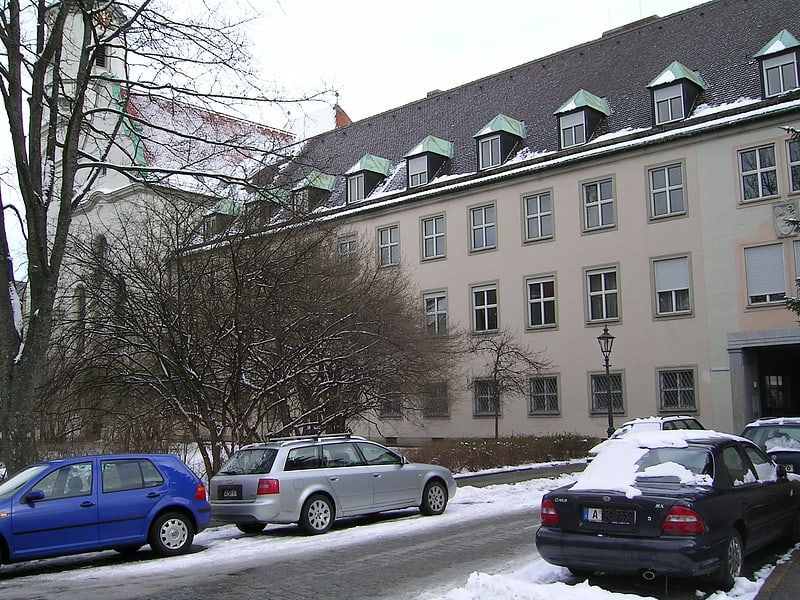
Also known as: St. Stephan
Monastery in Augsburg, Germany. St. Stephen's Abbey, Augsburg is a Benedictine monastery, formerly a house of Augustinian canonesses, in Augsburg in Bavaria, Germany.[25]
Address: Gallusplatz 2, Augsburg (Innenstadt)
Derchinger Baggersee
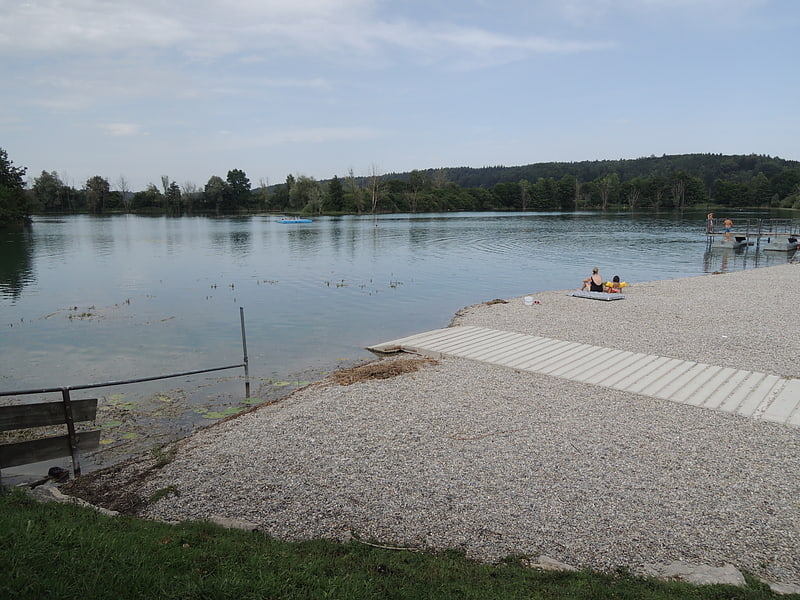
Lake in Germany. Derchinger Baggersee is a lake in Swabia, Bavaria, Germany. At an elevation of 464 m, its surface area is 6 ha.[26]
Neusäß

Town in Germany. Neusäß is a town in the District of Augsburg, Bavaria, Germany. The town lies on the Schmutter river and borders the city of Augsburg. As of 2018, the city had 22,164 inhabitants.[27]
Friedberger Baggersee
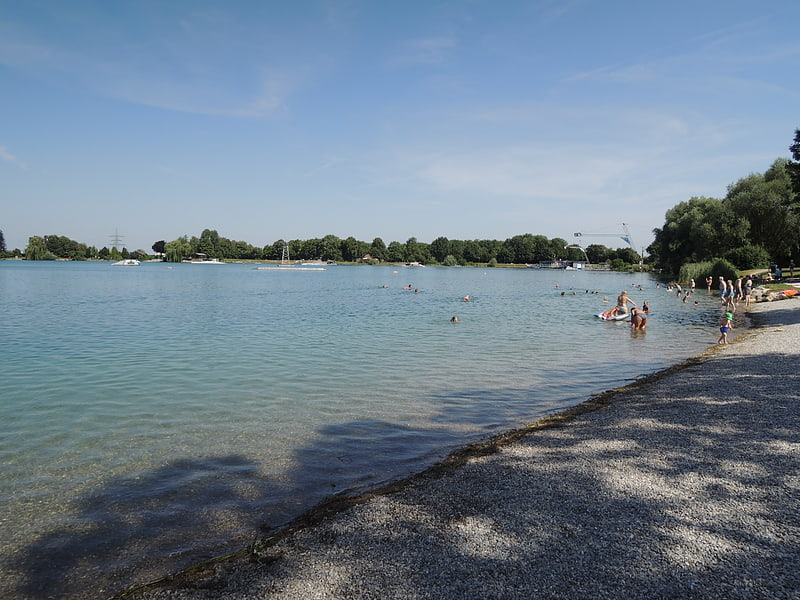
Lake in Germany. Friedberger Baggersee is a lake in Augsburg Swabia, Bavaria, Germany. At an elevation of 480 m, its surface area is 18 ha.[28]
Ilsesee

Lake in Germany. Ilsesee is a lake in Augsburg, Bavaria, Germany. At an elevation of, its surface area is ca. 12 ha.[29]
Mozarthaus
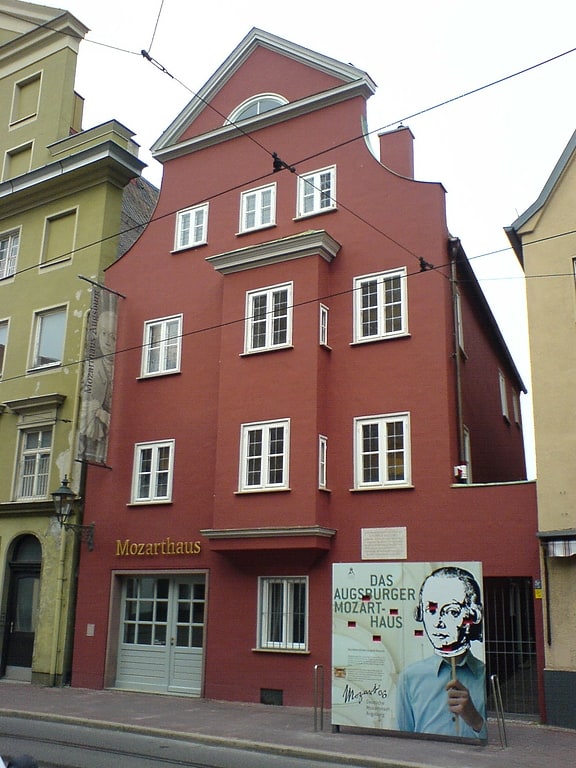
The Leopold Mozart House Augsburg is a museum in the German city of Augsburg, home to Mozart. It is located in a 17th-century craftsman's house where Leopold Mozart, the father of Wolfgang Amadeus Mozart, was born in 1719. Since 1937, the house has housed an exhibition and memorial center on the history of the Mozart family in Augsburg. Until 2018, the museum was called "Mozarthaus Augsburg." After a reconstruction, it was reopened in 2020 under a new name and with a completely new permanent exhibition.
The building has three floors and a curved gable. In the 19th century the house underwent changes. It is listed as a historical monument.
Address: Frauentorstraße 30, 86152 Augsburg (Innenstadt)
Wieselhaus
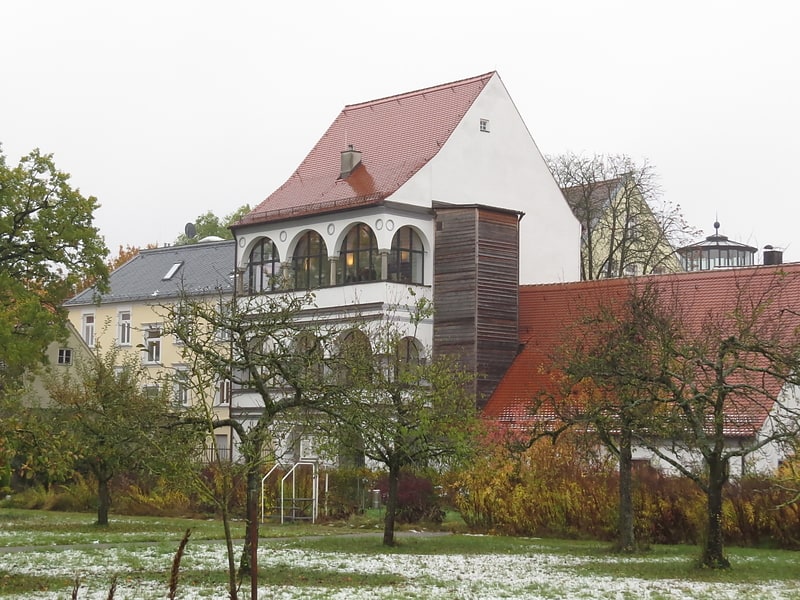
The Wieselhaus in Augsburg's cathedral district was built in the 16th/17th century. The former town house at Äußes Pfaffengässchen 23 is a protected architectural monument.
Address: 23 Äußeres Pfaffengäßchen, Augsburg (Innenstadt)
Kaisersee

Lake in Germany. Kaisersee is a lake in Augsburg, Schwaben, Bavaria, Germany. Its surface area is 4 ha.[30]
Parktheater im Kurhaus Göggingen
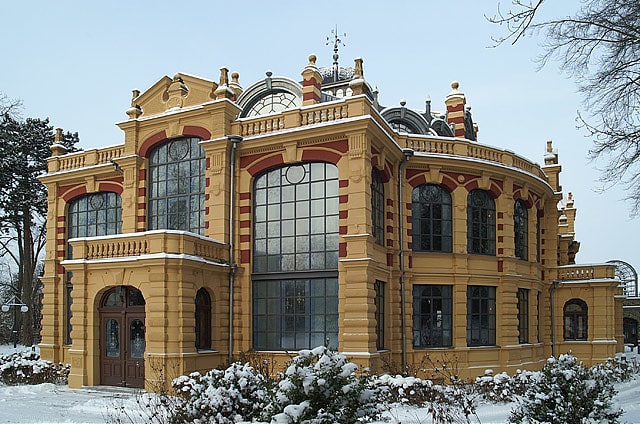
The Kurhaus Göggingen was designed and built by architect Jean Keller on behalf of Hofrat Friedrich Hessing 1885-1886. It contains the Parktheater Augsburg, the only surviving multifunctional theater of glass and cast-iron construction from the Gründerzeit.
Address: Klausenberg 6, 86199 Augsburg (Göggingen)